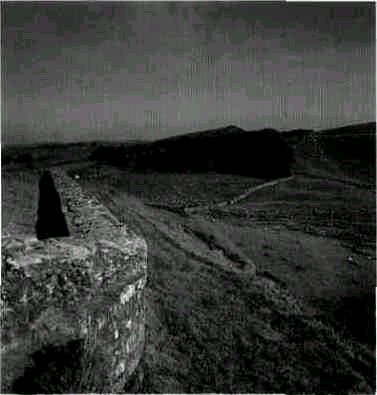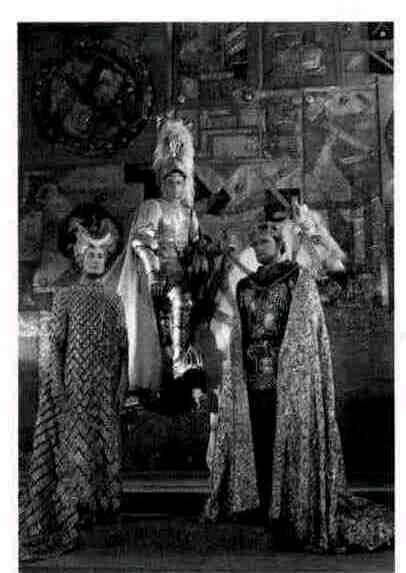
- •20 Food and drink 184
- •21 Sport and competition 191
- •23 Holidays and special 208 occasions
- •Introduction
- •10 I Country and people
- •12 I Country and people
- •14 I Country and People
- •2 History
- •16 2 History
- •18 2 History
- •It was in this period that Parliament began its gradual evolution into the democratic body which it is today. The word 'parliament',
- •20 2 History
- •22 2 History
- •24 2 History
- •26 2 History
- •28 2 History
- •30 2 History
- •32 3 Geography Climate
- •It was in Britain that the word 'smog' was first used (to describe a
- •36 3 Geography
- •38 3 Geography
- •40 3 Geography
- •Part of Snowdonia National Park
- •4 Identity
- •44 4 Identity
- •IrroubleatLllangybi
- •46 4 Identity
- •48 4 Identity
- •50 4 Identity
- •52 4 Identity
- •54. 4 Identity
- •5 Attitudes
- •58 5 Attitudes
- •60 5 Attitudes
- •62 5 Attitudes
- •64 5 Attitudes
- •66 5 Attitudes
- •In the history of British comedy,
- •6 Political life
- •68 6 Political life
- •70 6 Political life
- •72 6 Political life
- •74 6 Political life
- •6 Political life
- •78 7 The monarchy
- •The reality
- •84 8 The government
- •86 8 The government
- •88 8 The government
- •In comparison with the people of
- •9 Parliament
- •92 9 Parliament
- •94 9 Parliament
- •96 9 Parliament
- •100 10 Elections
- •102 10 Elections
- •104 10 Elections
- •I've messed up my life
- •Serb shelling halts un airlift
- •2 January is also a public holiday in
- •Identity 42—55
- •Illustrations by:
>
Hadrian's Wall
Hadrian's Wall was built by
the Romans in the second century across the northern border of their
province of Britannia (along nearly the same line as the present
English-Scottish border) in order to protect their territory from
attacks by the Scots and the Picts.
Hadrian's
Wall
The
Roman period (43-410) The
Roman province of Britannia covered most of present-day England and Wales. The
Romans imposed their own way of life and culture, making use of the
existing Celtic aristocracy to govern and encouraging this ruling
class to adopt Roman dress and the Roman language (Latin). They
exerted an influence, without actually governing there, over
only the southern part of Scotland. It was during this time that a
Celtic tribe called the Scots migrated from Ireland to Scotland,
where they became allies of the Picts (another Celtic tribe) and
opponents of the Romans. This division of the Celts into those who
experienced direct Roman rule (the Britons in England and Wales) and
those who did not (the Gaels in Ireland and Scotland) may help to
explain the development of two distinct branches of the Celtic group
of languages. The
remarkable thing about the Romans is that, despite their long
occupation of Britain, they left very little behind. To many other
parts of Europe they bequeathed a system of law and administration
which forms the basis of the modern system and a language which
developed into the modern Romance family of languages. In Britain,
they left neither. Moreover, most of their villas, baths and
temples, their impressive network of roads, and the cities they
founded, including Londinium (London), were soon destroyed or fell
into disrepair. Almost the only lasting reminder of their presence
are place-names like Chester, Lancaster and Gloucester, which
include variants of the Roman word castra (a military camp). The
Germanic invasions (410- 1066) One
reason why Roman Britannia disappeared so quickly is probably that
its influence was largely confined to the towns. In the
countryside, where most people lived, farming methods had
remained unchanged and Celtic speech continued to be dominant. The
Roman occupation had been a matter of colonial control rather than
large-scale settlement. But, during the fifth century, a number of
tribes from the north-western European mainland invaded and settled
in large numbers. Two of these tribes were the Angles and
16 2 History

Some important dates in British history
*bc means 'before Christ'. All the other dates are ad (Latin onno Domini), which signifies 'after the birth of Christ'.
55 BC*
The Roman general Julius Caesar lands in Britain with an expeditionary force, wins a battle and leaves. The first 'date' in popular British history.
ad 43 The Romans come to stay.
61
Queen Boudicca (orBoadicea) of the Iceni tribe leads a bloody revolt against the Roman occupation. It is suppressed. There is a statue ofBoadicea, made in the nineteenth century, outside the Houses of Parliament. This has helped to keep the memory of her alive.
The Germanic invasions 17
the Saxons. These
Anglo-Saxons soon had the south-east of the country in their grasp.
In the west of the country their advance was temporarily halted by
an army of (Celtic) Britons under the command \ of the
legendary King Arthur (> King Arthur). Nevertheless, by the end
of the sixth century, they and their way of life predominated in
nearly all of England and in parts of southern Scotland. The Celtic
Britons were either Saxonized or driven westwards, where their
culture and
-anguage survived in south-west Scotland, Wales and Cornwall.
The Anglo-Saxons had little use for towns and cities. But they had
a great effect on the countryside, where they introduced new
panning methods and founded the thousands of self-sufficient
vil-.ages which formed the basis of English society for the next
thousand ~a
so years.
The Anglo-Saxons were pagan when they came to Britain. Christianity
spread throughout Britain from two different directions luring the
sixth and seventh centuries. It came directly from Rome when St
Augustine arrived in 597 and established his headquarters.
Canterbury in the south-east of England. It had already been
introduced into Scotland and northern England from Ireland, which
had become Christian more than 150 years earlier. Although Roman
Christianity eventually took over the whole of the British Isles,
the Celtic model persisted in Scotland and Ireland for several
hundred ears. It was less centrally organized, and had less need
for a strong monarchy to support it. This partly explains why both
secular and religious power in these two countries continued to be
both more locally based and
less secure than it was elsewhere in Britain through out the
medieval period.
Britain experienced another wave of Germanic invasions in the
eighth century. These invaders, known as Vikings, Norsemen or
Danes, came from Scandinavia. In the ninth century they conquered
and settled the extreme north and west of Scotland, and also some
Coastal regions of Ireland. Their conquest of England was halted
when they were defeated by King Alfred of the Saxon kingdom of
Wessex (> King Alfred). This resulted in an agreement which
divided England between Wessex, in the south and west, and the
'Danelaw' in the north and east.
>
King Arthur
King Arthur provides a
wonderful example of the distortions of popular history. In
folklore and myth he is a great English hero, and he and his
knights of the round table are regarded as the perfect example of
medieval nobility and chivalry. In fact, he lived long before
medieval times and was a Romanized Celt trying to hold back the
advances of the Anglo-Saxons - the very people who became 'the
English'!
King Arthur, Queen
Guinevere and one of the knights of the round table, from the film
'Camelot'

410
The Romans leave Britain.
432
St
Patrick
converts Ireland to Christianity.
St Augustine arrives in England. The Peace ofEdington partitions
—_____————————_—_—___—_ England between the Saxons, led by
793 King Alfred, and the Danes.
The great monastery on the island of —————————————————————
Lindisfarne in northeast England is 973
destroyed by Vikings and its monks Edgar, grandson of Alfred, becomes
killed, king of all England.
